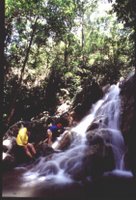
For most people from the city, the name Lubang is often equated with the Onoda story. Back in 1974 Lt. Hiroo Onoda, a Japanese soldier who held out in the jungles of Lubang island for 30 years after the war, surrendered. He was trained in guerilla warfare before he was sent to the Philippine is 1954. He received instructions to proceed to Lubang, destroy Tilik port with explosives and lead the remaining soldiers in the fight against the Americans. Most of the Japanese however were either killed or caught as prisoners. But a few remained deep in the jungles and continued their fight. The last to give up his arms was Lt. Onoda who refused to believe that the war was over despite the fliers that were scattered by plane, magazines left along the trails and pleas from friends and relatives. When he surrendered to former President Ferdinand Marcos 32 years ago, he was still wearing his uniform that was patched up in many areas, held his sword that was polished and well maintained, and saluted like a dignified soldier. Lt. Onoda is now 81 years old and lives in a farm in Brazil.
When I assembled my team to explore Onoda’s jungle October of last year, I came prepared. I bought and read the book entitled “No Surrender” which Onoda himself wrote, and was translated in English. Here, he describes in details how he came to Lubang, ended up holed up in the jungle, how he survived for 30 years without being caught and living off from the produce of the land. It was quite an interesting story and provided an insight to the man who was treated as a hero by his countrymen upon his return to Japan.
Our expedition to Lubang was part of the local government’s effort to come up with a sustainable tourism development plan highlighting on the Onoda Trail. The team was composed of seasoned mountaineers, a geographer, tourism field workers, a photographer and community members who served as our guides. We started our journey from a place called Vigo. A dump truck took us from the town of Lubang to a point up in the hills of Vigo until the truck couldn’t go any further. We hiked with our packs following our guides who hacked with their bolos to create a temporary trail. We went through thick growths of shrubs, vines, giant ferns and stinging plants. For a time we followed a small stream covered with large boulders that formed steps going up a steep slope. As we went deeper into the jungle, the trees became bigger and the air became cooler. Due to the extensive canopy of the forest our GPS could not even read any satellite.
After two hours we reached a plateau covered with age-old trees. By this time we could smell the strong odor of bat guano. We proceeded westward until we got to a wall of limestone almost completely covered with vines and plants. Two large boulders conceal an opening that goes into a small cave. As soon as we clambered in, bats started flying out from a dark corridor. This is one of the several caves where Onoda hid during his stay on the island. We hang out for a while, trying to imagine how he could have survived here and what went on in his mind. When his last two companions Private First Class Kozuka and Corporal Shimada were still alive, they would travel through a circuit that they have created. It starts from Gonting, a place along the south shore, and goes in a counterclockwise direction, coursing through the mountains in the central sector of the island. They transfer from one site to another, staying from 3 to 5 days in each place, covering the entire circuit in a period of one month.
When one of my team members got stung by a plant called lipa, we decided that it was time to move on and head towards Vigo River. Our local guide pointed to other local plants that have hairs and carry some kind of stinging cells. We tried to remember how they look like and realized that they were quite a bunch of them along the trail. We ended up ducking our heads and avoiding rubbing our bare skin against them.

We headed east across canyons and steep slopes. An hour’s hike led us to the banks of the beautiful Vigo River. Two of our local guides who went ahead much earlier were already there with a sack-full of freshwater shrimp. They caught them in the river with a net. A fire was built, and while the rice and shrimps were being cooked, we walked along the water’s edge and marveled at the multi-colored rocks. Carved by time and the elements, the rocks come in various shades of pink, yellow, orange and green.
After lunch, we proceeded south and followed the river. It winds through the jungle and every now and then shows evidence of its power and might. At some point large trunks of dead trees rest along its banks amidst shrubs that lean towards the waters flow. While there are deep quiet pools, the river also has some shallow, tumbling brooks making it possible for us to cross countless times. The thick canopy of the trees lining the banks provides a habitat for many species of animals. While we hiked, we were treated to a symphony of bird calls and sounds of insects, beautifully blending with the sound of running water. Standing in the middle of it all, and gazing at the patterns of leaves against the blue sky, we felt so far away from civilization. We were engulfed by nature as nature should be.
Vigo barangay captain Manuel Villaflores emphasizes the need to protect the forest and this river system. He adds,” Onoda’s presence somehow helped protect the forest of Lubang.” People were afraid to go up the hills and log. It’s been 32 years since he surrendered and yet this valuable ecosystem has retained its integrity. The Onoda Trail is a legacy and asset that Lubang can certainly capitalize on its plan to promote sustainable tourism.





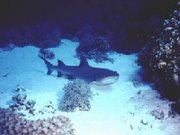


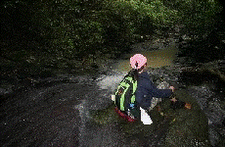
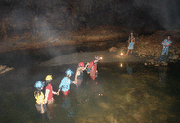
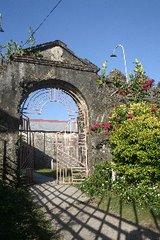
No comments:
Post a Comment